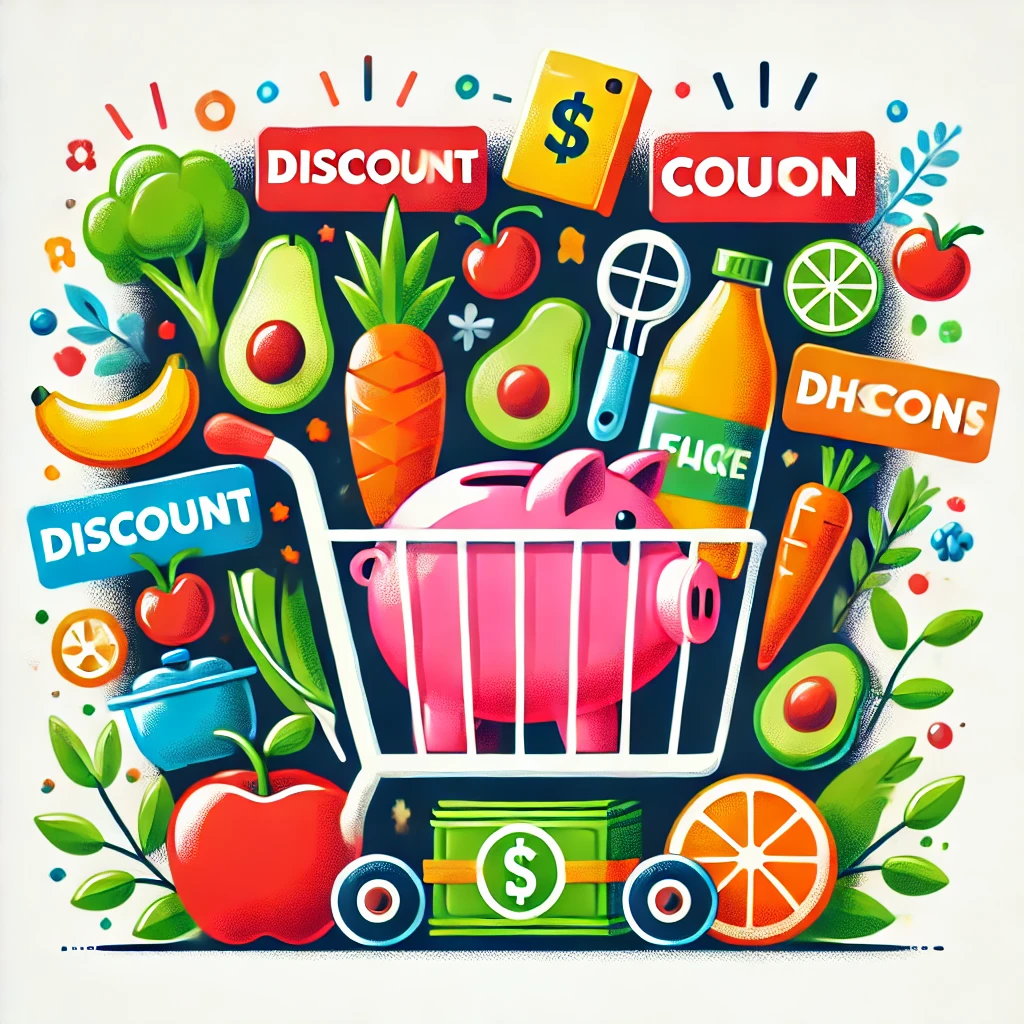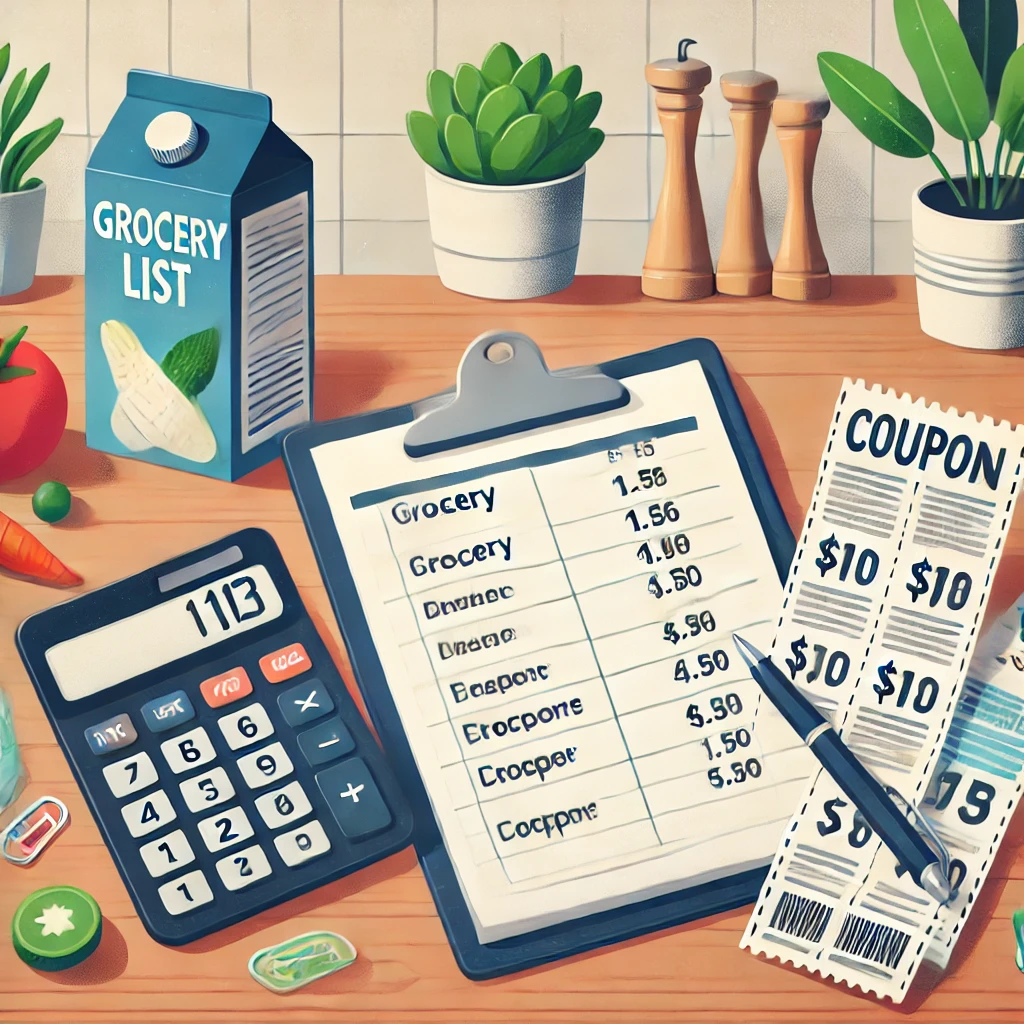10 Tips for Saving Money Grocery Shopping Without Sacrificing Quality

Shopping for groceries is one of life’s unavoidable tasks, but it doesn’t have to be a drain on your wallet. With a bit of planning and strategy, you can eat well without overspending. Here are ten creative and practical ways to save money at the grocery store while still enjoying high-quality meals.
1. Plan Your Meals Like a Pro
Impulse buying is one of the biggest culprits of grocery overspending. By planning your meals for the week, you can shop with a clear purpose and avoid wasting money on items you don’t need.
How to Do It:
- Take inventory of what you already have at home to avoid duplicates.
- Plan meals around items on sale or in season.
- Make a detailed shopping list and stick to it.
Bonus Tip: Apps like Mealime or Paprika can simplify meal planning by generating shopping lists based on your selected recipes.
For more guidance on mastering budget-friendly strategies, check out Your Guide to Budgeting, Saving, and Investing for Financial Success.
2. Shop Seasonal and Local Produce
Seasonal fruits and vegetables not only taste better but are also significantly cheaper. Shopping locally, such as at farmers' markets, can further cut costs.
Why It Works:
- In-season produce is more abundant, driving prices down.
- Local goods often skip the added costs of transportation and middlemen.
Quick Tip: Learn what’s in season in your area and build your meals around those items.
3. Embrace the Store Brands
Store-brand products often match the quality of name brands at a fraction of the price. Items like canned goods, dairy, and cleaning supplies can be purchased without sacrificing quality.
Why You’ll Love It:
- Store brands are usually manufactured by the same companies that make name-brand products.
- The price difference can save you hundreds annually.
Pro Tip: Compare ingredient lists of store-brand and name-brand products to confirm you’re getting the same quality.
4. Leverage Loyalty Programs and Coupons
Many stores offer loyalty programs that reward you with discounts, coupons, or even cashback. Combining these perks with digital or paper coupons can lead to massive savings.
How to Maximize Savings:
- Sign up for your favorite store’s loyalty program.
- Use apps like Rakuten, Ibotta, or Honey for additional cashback and coupon stacking.
- Check the store’s app for digital coupons before heading out.
Find more money-saving tools and strategies in Top Financial Tools & Apps.
5. Buy in Bulk—but Be Smart About It
Bulk shopping can save money, but only if you’re strategic. Focus on non-perishable items or products you use frequently, like rice, pasta, or cleaning supplies.
Dos and Don’ts of Bulk Shopping:
- Do: Buy items with a long shelf life or those you can freeze.
- Don’t: Purchase perishables in bulk unless you’re hosting a big event.
Pro Tip: Membership stores like Costco or Sam’s Club offer excellent bulk deals but ensure the membership fee is worth the savings for your household size.
6. Avoid the “Convenience” Tax
Pre-cut fruits, pre-grated cheese, and individually wrapped snacks may save you time but cost significantly more than their whole counterparts.
Save Without Sacrificing:
- Buy whole fruits and vegetables and prepare them yourself.
- Skip single-serving packs—buy in larger quantities and portion them at home.
Why It’s Worth It: You’ll save money while gaining control over portion sizes and freshness.
7. Don’t Shop Hungry
Shopping on an empty stomach is a surefire way to blow your budget. Hunger clouds your judgment, making everything look more tempting.
Quick Fix:
- Eat a small meal or snack before shopping.
- Stick to your shopping list and avoid the snack aisle if it’s not on your list.

8. Master the Art of Price Matching
Some stores offer price-matching policies, allowing you to get the lowest price without visiting multiple locations.
How to Price Match Effectively:
- Check competitor ads before heading to your favorite store.
- Bring proof of lower prices (digital or paper) and show them at checkout.
Pro Tip: Apps like Flipp can help you compare prices across stores.
9. Embrace Frugality and Minimalism
Simplifying your grocery habits can lead to unexpected savings. For instance, focusing on fewer, high-quality ingredients can make your meals more enjoyable while reducing waste.
How to Start:
- Choose versatile ingredients that work across multiple recipes.
- Limit pre-made or processed foods and cook from scratch.
For more inspiration, read our guide on Frugality and Minimalism: The Path to Financial Freedom.
10. Freeze and Store Smartly
Reducing food waste is one of the easiest ways to save money. Learning how to store your groceries properly ensures you get the most out of your purchases.
Smart Storage Tips:
- Freeze leftover bread, fruit, and cooked meals for future use.
- Store produce like lettuce or herbs with a damp paper towel to prolong freshness.
- Use airtight containers for dry goods to prevent spoilage.
Extra Credit: A vacuum sealer can be a worthwhile investment for long-term savings.
Why Grocery Shopping Smarter Matters
Saving money on groceries doesn’t just help your wallet—it’s an opportunity to refine your habits, reduce waste, and enjoy better meals. By adopting these strategies, you can cut costs without compromising the quality of your food or lifestyle.
For more detailed strategies on managing your money, take a look at Financial Wellness Tips: Income and Expense Management.
Grocery shopping on a budget doesn’t mean settling for less. By planning ahead, using loyalty programs, and making smarter purchasing decisions, you can enjoy delicious meals while saving significant money. Start incorporating these tips into your routine today and watch the savings add up!
